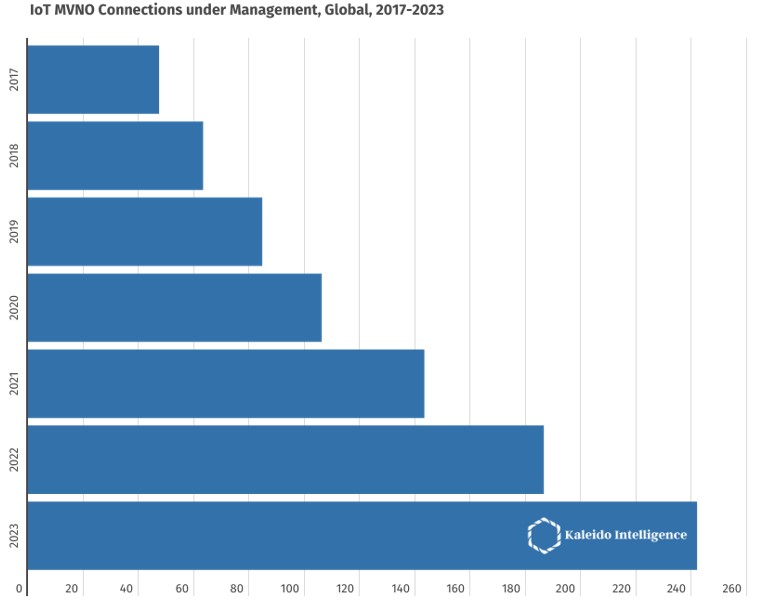In the world of IoT, MVNOs passed a significant milestone in 2023, with over 200 connections managed globally. The ability to address ‘long tail’ IoT enterprise customers with the addition of being able to offer greater flexibility in addressing more niche requirements has meant that such players have seen significant growth since 2017, when only 47 million connections were under management.
Meanwhile, MNO attitudes towards IoT MVNOs are beginning to shift, with a greater willingness to partner on a wholesale basis being observed, which, in turn, has allowed IoT MVNOs to extend and enhance their coverage footprints and technology portfolios.
Nevertheless, the industry is at somewhat of a crossroads. On the one hand, there is downward pressure on retail airtime pricing, while on the other, wholesale network access charging rates are increasingly being applied to put pressure on overall connectivity margins. For players focused on a pure connectivity play, a difficult road lies ahead for those that do not have a substantial portion of higher bandwidth, higher margin customers.

In addition to this, customer demands and expectations are undergoing changes. According to a 2023 survey conducted by Kaleido Intelligence covering enterprise cellular IoT, 89% of the 800-strong survey cohort cited international regulation and commercial restrictions related to roaming connectivity as their top concern where IoT connectivity is concerned. This finding, as well as others in the survey, highlight how the customer is increasingly sophisticated and demanding. Despite this, less than 30% of the connections managed globally by IoT MVNOs in 2023 were enabled through eSIM, which would offer a vital tool to navigating the complexities of diverse attitudes towards international IoT roaming connectivity.
Focus on the customer
Ultimately, meeting these challenges impacting the market is a question of solution control, technology deployment and expertise to enable flexibility and the opportunity to diversify beyond what is often a pure connectivity resell. Increasingly, advanced players are deploying eSIM in conjunction with their own core network infrastructure and packet gateways as full MVNOs. Here, improved access to near real-time network and SIM information in addition to capabilities to better address OTA capabilities, low-latency and data sovereignty requirements, offers key enhancements to a basic connectivity offering. Thanks to the availability of cloud infrastructure, capital expenses required to compete on the market in this manner have been greatly reduced compared to a decade ago. Meanwhile, several MVNE players now offer platform- or infrastructure-as-a-service solutions.
Today, many IoT MVNO players are struggling with the issue of solution or service diversification beyond pure connectivity. Do they specialise in a particular vertical and offer tooling to address more complex requirements? This approach undoubtedly works well for some but here, there are risks associated with overreliance on one specific client or sector – and we have recently seen how black swan events such as COVID-19 can abruptly bring entire commercial sectors to a standstill. Alternatively, we can look towards the client: for example, in Kaleido’s survey, 77% of the respondent base cited service provider experience in hardware as a key factor influencing buying decisions, with 56% reporting that hardware design is a critical barrier to scaling operations up. Meanwhile, 52% of respondents saw a strong need for a comprehensive value-added services (VAS) portfolio. An earlier blog on this website discussed the potential for AI use by MVNOs – inevitably, opportunities here are beginning to emerge (and be applied by some more advanced players) to deliver VAS in areas such as SIM estate analytics, automation, network layer security as well as OTA optimisation. Not only do the approaches discussed here enhance customer stickiness, but also add incremental value to the overall connectivity proposition. In today’s intensely competitive IoT connectivity environment, this is critical for long-term sustainability.

Guest Blogs are written by carefully selected Experts. If you also want to create a Guest blog then Contact us.
